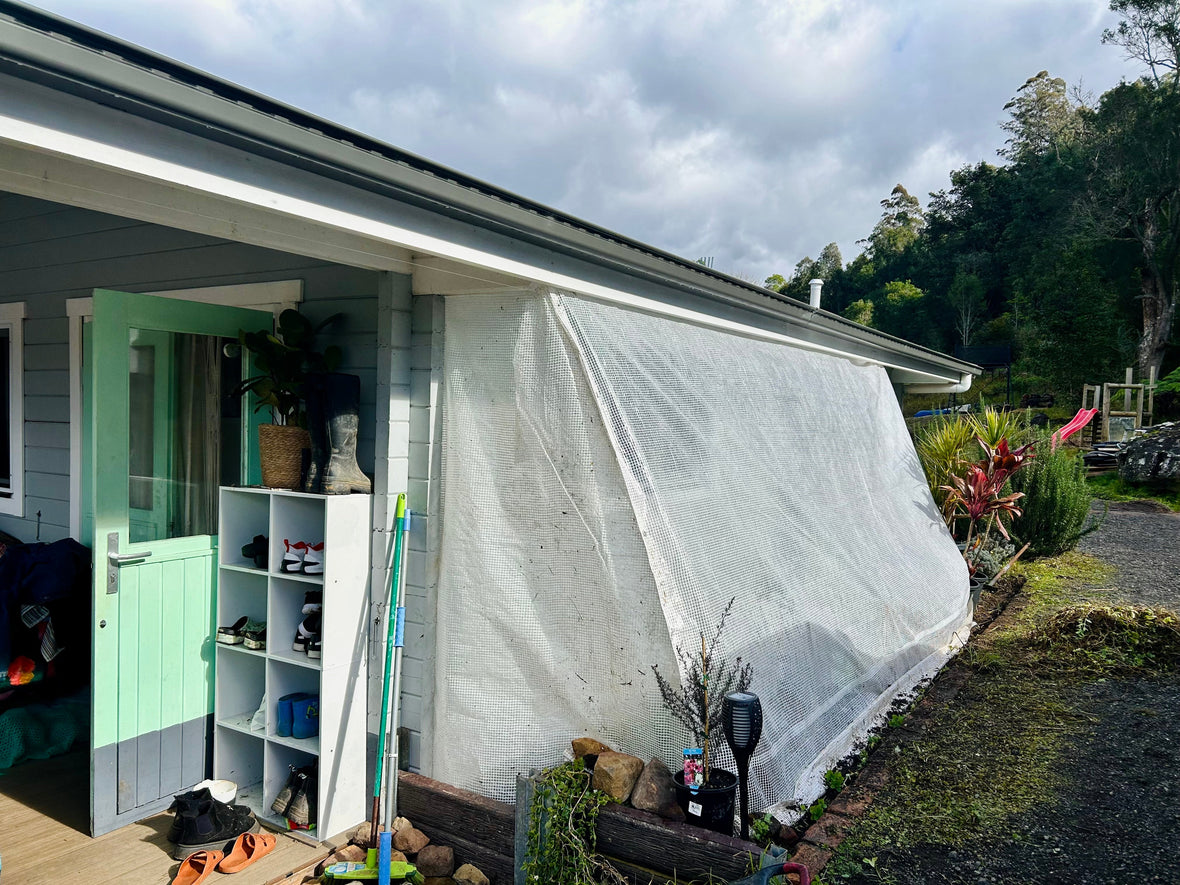
Small and Slow Solutions: How a Simple Tarp Turned My Coldest Spot into a Passive Heater
Aimee Cosentino
In winter, my little house sits in the shadow of the mountain behind it. The sun barely reaches us for weeks at a time, and the chill hangs in the air all day. I used to run the heater from morning until night just to keep the place comfortable. But this year, I decided to try something different — and the result has been better than I imagined.
Why Passive Heating Matters
Passive heating is about capturing and storing the sun’s energy without needing constant fuel, electricity, or complicated technology. By working with nature rather than against it, you can keep your space warmer in winter (and cooler in summer) while using less energy and saving money.
It’s one of the simplest ways to reduce your household’s footprint — and it’s not just for new builds or expensive retrofits. Sometimes, it’s as easy as looking at what you already have.
The Small & Slow Solution
I wasn’t ready to invest in a permanent attached greenhouse or glass sunroom, but I did have a clear tarp lying around. With a few makeshift fixings, I hung it along the north side of the house to create a temporary enclosed space.
During the day, sunlight passes through the tarp and warms the air inside. I leave my kitchen window open, and the warm air drifts straight into the house. Now, instead of the heater running all day, it only goes on around 8 pm. That’s a huge drop in power use — and a big win for comfort.
This space has also become a mini “pop-up hothouse” for my kitchen herbs and spring seedlings. The warmth gives them a head start, and I can step out to pick fresh herbs without freezing in the wind.
Looking Ahead: Passive Cooling
Once spring and summer arrive, this north-facing spot will be in full sun — which can be just as much of a problem as winter shade. The solution? Grape vines. By growing deciduous vines here, I’ll have leafy summer shade to keep the house cooler and protect it from the harsh sun. In winter, when the vines drop their leaves, the sunlight will stream back in and help warm the space again.
Why This Fits the Permaculture Approach
One of the 12 permaculture principles is Use Small and Slow Solutions. It’s about starting with what you have, making low-cost, low-impact changes, and letting them evolve over time. You don’t need a huge budget or major renovations to make your home more comfortable and sustainable.
Sometimes, a single tarp, a handful of plants, and a bit of observation is all it takes to create real change.
Further Reading
Permaculture was co-developed in the 1970s by Australians Bill Mollison and David Holmgren. It’s a practical design approach for creating homes, gardens, and communities that work with nature — producing food, energy, and resources in ways that restore the land and support people.
One of its 12 core principles, Use Small and Slow Solutions, encourages starting with what you have, making low-cost improvements, and letting systems evolve over time — exactly what this passive heating and cooling project demonstrates.
You can explore all 12 principles in detail on David Holmgren’s website: https://holmgren.com.au


